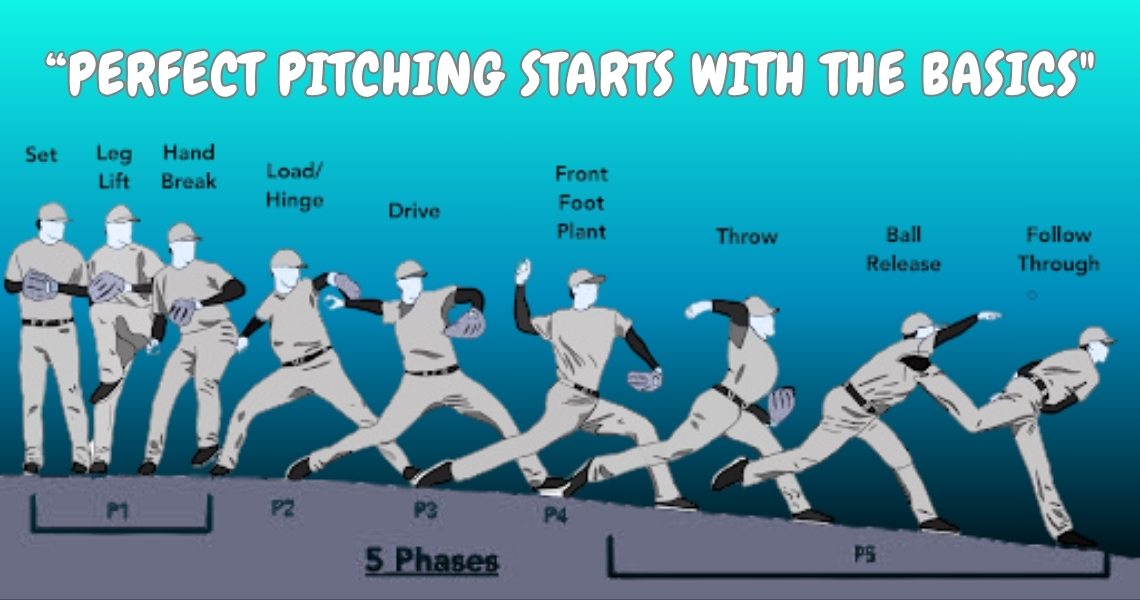True pitching success isn’t just about raw velocity or dazzling movement, it’s about making customized, strategic decisions that give you the ultimate edge. At BOA Custom, we believe one of the most underrated tools in a pitcher’s arsenal is the ability to read a hitter’s stance and body language. Elite pitchers don’t just throw; they observe, adapt, and exploit what hitters give away, turning every at bat into a personalized strategic battle.
In this expanded guide, we’ll dive deeper into how to read a batter’s stance, what crucial cues you should pay attention to, how to optimize your pitch selection in real time, and how to leverage this customized knowledge to dominate the diamond. Whether you’re a developing pitcher striving for elite performance or a coach looking to equip the next ace with strategic intelligence, this guide is your blueprint for game day readiness.
Unlock Your Strategic Advantage: Why a Batter’s Stance Matters
A batter’s stance isn’t just a matter of comfort or routine—it’s a visual indicator of their strengths, weaknesses, timing, and tendencies. It’s a puzzle piece in their customized approach to the plate. The way they set up can reveal their entire plan for the at-bat. Observing these critical details empowers pitchers to exploit what they see, giving you a strategic advantage before even throwing a pitch.
When you begin learning how to read stances, you start to recognize customized patterns across different hitters. You’ll notice how aggressive hitters tend to stand differently from patient ones, allowing you to tailor your attack. You’ll also begin to predict swing paths, anticipate timing issues, and understand the zones a hitter may struggle to reach, all contributing to your optimized pitching strategy.
Mastering the Read: Key Cues for Your Custom Pitching Strategy
While every hitter is different, there are several common cues that pitchers can study to personalize their approach:
1. Open vs. Closed Stance
- Open Stance: The front foot is pulled away from the plate. This setup often helps hitters see the ball better and rotate quickly, making them strong pull hitters. Against these batters, customize your attack by working the outer part of the zone and mixing in changeups to disrupt their rhythm and optimize your out-getting potential.
- Closed Stance: The front foot is closer to the plate. Hitters using this stance might struggle with inside pitches. Target the inner half with fastballs or cutters to jam them and limit their power, securing your strategic edge.
2. High vs. Low Hand Placement
- High Hands: Indicate a longer swing path and an emphasis on power. Hitters with high hands are often trying to lift the ball. Counter this with high fastballs above the belt and low breaking balls to change their eye level, forcing weak contact and maintaining your dominance.
- Low Hands: Typically signal a quicker, compact swing. These hitters can get the bat to the ball fast, especially on pitches down in the zone. Use elevated fastballs or off-speed pitches to force bad contact and control the at bat.
3. Wide vs. Narrow Stance
- Wide Base: A wider stance often means better balance and less movement. It gives the hitter a firm foundation but can make it harder to adjust to off-speed pitches. Pitchers can take advantage by changing speeds and locations, tailoring your pitch sequence for maximum effectiveness.
- Narrow Stance: These hitters may have a bigger stride or leg kick, which creates more movement and timing issues. Throw inside and mix speeds to disrupt their rhythm, showcasing your strategic pitching intelligence.
4. Footwork and Pre-Swing Motion
Watch the front foot. Is there a big leg kick? A toe tap? A small stride? These movements indicate how much the hitter relies on timing. Bigger movements can be disrupted with quick pitches or delayed deliveries, giving you a customized advantage in rhythm disruption.
Also look at the hands—if they’re fidgety and moving, it could signal aggression or nervousness. If they’re still, the batter might be sitting on a pitch type or guessing, allowing you to optimize your pitch selection.
5. Bat Angle and Grip
A steep bat angle can suggest a longer swing. A flat bat angle may indicate a level or inside-out approach. Watch their grip pressure too—tight, tense hands may lead to slower reactions and more guesswork, providing crucial insights for your game-day strategy.
In-Game Adjustments for Peak Performance
Reading the stance is only part of the equation. As the at-bat develops, pay attention to how the hitter reacts to each pitch, allowing you to make real-time, customized adjustments. For example:
- If they swing early on a fastball, consider throwing off-speed next to keep them off balance.
- If they foul off a fastball late, go up in the zone or speed up the tempo to maintain your strategic edge.
- If they dive over the plate, bust them inside with authority, asserting your dominance on the diamond.
You can also learn a lot from their body language between pitches. A batter who steps out, takes a deep breath, or stares into space might be guessing. Others might crowd the plate to cheat on outer-zone pitches—this is when inside heat becomes your best friend for optimized pitch execution.
Use your catcher’s feedback too. Many catchers are trained to recognize subtle cues and help guide pitch selection accordingly, forming a powerful strategic partnership.
Situational Examples: Customizing Your Attack
Let’s say you’re facing a right-handed hitter with an open stance and a high leg kick. What can you infer?
- They’re likely trying to pull the ball
- They depend on rhythm and timing
- They may be susceptible to pitches low and away
Start them with a fastball on the outer edge, then go to a curveball or slider that breaks away. If they adjust and try to reach, come back inside with authority, demonstrating your adaptive pitching intelligence.
Now consider a lefty with a closed stance and low hands. They might be looking to shoot the ball the other way or fight off inside pitches. In this case, mix in cutters and two-seamers that bore in, and try a changeup down and away to get weak contact, showcasing your personalized strategic mastery.
What to Avoid for Optimal Strategy
It’s easy to overanalyze or guess wrong when trying to read a hitter. Avoid making assumptions without watching several cues. Don’t be too rigid with your plan—if something isn’t working, adjust your customized approach.
Most importantly, don’t forget to pitch with intent. Even the right pitch will fail if you don’t throw it with confidence and conviction, undermining your performance advantage.
Elevate Your Game with BOA Custom
Ready to take your pitching intelligence to the next level? Pair your strategic insights with performance driven custom gear from BOA Custom. From custom jerseys that inspire confidence to personalized training aids that refine your mechanics, we provide the tools you need to dominate the diamond. Visit BOA Custom today and start building your winning advantage.
Frequently Asked Questions for Strategic Pitching
A: Reading a batter’s stance helps a pitcher identify the hitter’s strengths, weaknesses, timing, and tendencies before even throwing a pitch, providing a customized strategic advantage that sets you apart on the mound.
A: Pitchers should observe whether the batter’s stance is open or closed, hand placement (high or low), stance width (wide or narrow), footwork, pre-swing motion, bat angle, and grip pressure to optimize their game plan.
A: An open stance often signals a pull hitter who sees the ball well, so customizing your pitch selection to the outer part of the strike zone and mixing in changeups can disrupt their rhythm and maximize your effectiveness.
A: Batters with a closed stance may struggle with inside pitches; targeting the inner half with fastballs or cutters can jam them and reduce their power, giving you a clear strategic edge.
A: High hands indicate a longer swing aiming for power, so high fastballs and low breaking balls work well to change eye levels. Low hands suggest a quick, compact swing, so elevated fastballs or off-speed pitches can induce bad contact, all part of your tailored pitching strategy.
A: Large or complex leg kicks might indicate reliance on timing and rhythm, which can be disrupted with quick pitches or delayed deliveries, offering a customized approach to throw off their timing.
A: Pitchers should adapt in real-time by observing the batter’s reactions to pitches, mixing pitch types, speeds, and locations based on swings, fouls, and body language to maintain a dynamic and optimized strategy.
A: Yes, actions like stepping out, deep breaths, or spacing out may indicate guessing or uncertainty, while crowding the plate can signal an attempt to cheat pitches on the outer edge, providing valuable cues for your strategic adjustments.
A: Catchers are trained to notice subtle cues and can help guide pitch selection based on their observations of the batter’s stance and reactions, forming a crucial part of your team’s custom strategy.
A: Avoid overanalyzing or making assumptions from limited observations, and don’t stick rigidly to a plan if it’s not working. Always pitch with confidence and adjust as needed to ensure peak performance and strategic success.
Final Thoughts: Your Custom Path to Dominance
Pitching is more than just throwing—it’s about outsmarting the batter. Reading a hitter’s stance gives you a massive strategic advantage, but it’s only useful if you combine that knowledge with smart, customized pitch execution.
Use the clues in their setup, movement, and reactions to build a better, personalized game plan. Recognize tendencies early. Test your theory with your pitch mix. And most importantly, stay flexible as the at bat unfolds, constantly optimizing your approach.
Understanding a hitter’s game and taking it away turns you from a competitor into a serious threat on the mound, ready to dominate the diamond with Boa Custom intelligence.



